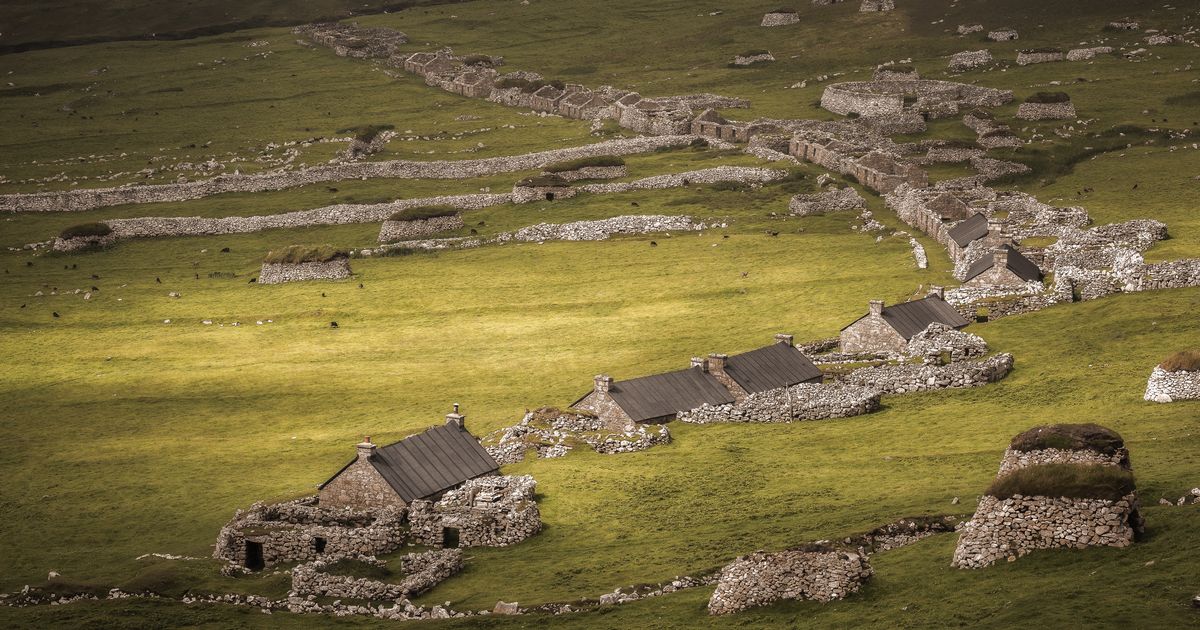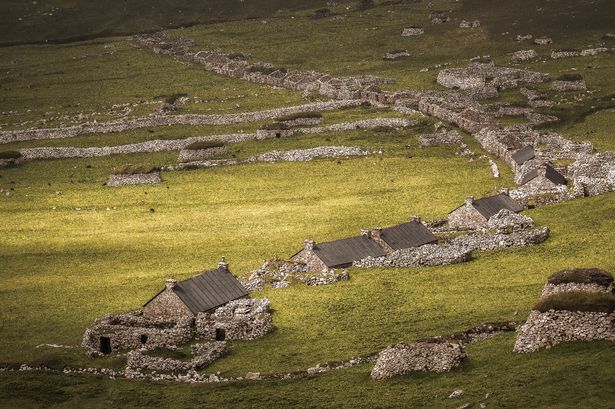An abandoned Scottish archipelago with a dark history tied to the First World War has been named among the UK’s spookiest seaside escapes. The remote islands of St Kilda, over 40 miles from the mainland, feature deserted cottages and abandoned crofts, offering visitors a haunting glimpse into a community lost to time.
New research from Simply Sea Views listed Britain’s Top 10 Haunted Coastlines, with St Kilda standing out as a uniquely eerie destination. “Over 40 miles from the Scottish mainland, St Kilda’s deserted cottages and abandoned crofts tell the story of an island community lost to time,” the guide said.
“Boat trips to the islands run in summer and early autumn, offering visitors the chance to explore this haunting UNESCO World Heritage site – said to echo with whispers of its former residents.”
Fragments of the past linger across the islands, now home to the UK’s largest colony of Atlantic puffins. Its isolation makes for a truly haunted experience for anyone who dare visit St Kilda’s shores.
St Kilda is the UK’s only dual UNESCO World Heritage Site, recognised for both its ecological and cultural significance, and one of just 39 such sites globally.
Nearly one million seabirds, including puffins, gannets and fulmars, now inhabit the islands, clinging to towering cliffs and sea stacks amid the Atlantic’s storm-tossed waters.
The islands’ human story stretches back thousands of years. Prehistoric settlers used the rich marine resources, raised animals and cultivated crops.
Bronze Age travellers may have visited from the Western Isles 4,000–5,000 years ago, with stone tools and burial structures discovered on Hirta hinting at this long history.
By the 1830s, the Reverend Neil Mackenzie had laid out a crescent of Hebridean blackhouses, with single-roomed houses originally housing both people and cattle in winter. Newer houses in the 1860s included small entrance lobbies and two main rooms.
Unique to St Kilda are hundreds of cleits, drystone storage structures used to dry birds, eggs and feathers, as well as crops and peat for fuel, with roughly 1,400 scattered across the islands.
St Kilda’s isolation shaped a remarkable culture, but it also made the islands vulnerable.
Contact with visitors and steamship tourists introduced disease and cultural shifts. Many young islanders emigrated, particularly to Melbourne, Australia, founding the suburb of St Kilda.
 Join the Daily Record WhatsApp community!
Join the Daily Record WhatsApp community!
Get the latest news sent straight to your messages by joining our WhatsApp community today.
You’ll receive daily updates on breaking news as well as the top headlines across Scotland.
No one will be able to see who is signed up and no one can send messages except the Daily Record team.
All you have to do is click here if you’re on mobile, select ‘Join Community’ and you’re in!
If you’re on a desktop, simply scan the QR code above with your phone and click ‘Join Community’.
We also treat our community members to special offers, promotions, and adverts from us and our partners. If you don’t like our community, you can check out any time you like.
To leave our community click on the name at the top of your screen and choose ‘exit group’.
If you’re curious, you can read our Privacy Notice.
World War I further reduced the population, with a German submarine destroying a naval beacon, the church, and a lamb. By 1930, following illness and unsustainable living conditions, the remaining 36 islanders voted to evacuate permanently.
They left behind a plate of oats and an open Bible in each cottage before boarding the ship Harebell on 29 August 1930. The last evacuee, a girl aged eight at the time, died in 2016.
Today, the islands are managed by the National Trust for Scotland and host a small military installation, Neolithic Soay sheep, and the rare Boreray breed.
Visitors can stay on the main island of Hirta at a small pre-booked campsite, available for up to five nights, with shared toilets and drinking water. There are no shops or mobile coverage, and guests must bring their own supplies and cooking equipment.


